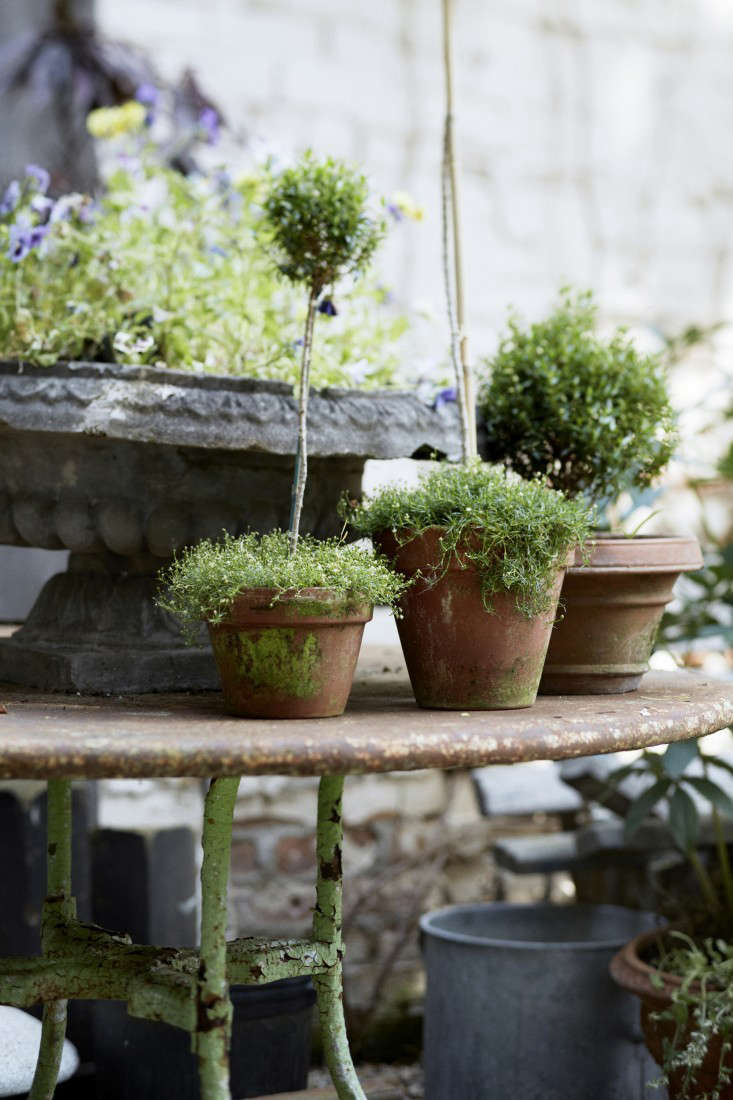Rosemary, Rosmarinus officinalis: “The Brain Teaser”
For a plant believed to boost memory, rosemary is hardy enough to be forgotten–that is, until there is a Mediterranean dinner to cook, or any occasion that involves roasted lamb, potatoes, or chicken. Otherwise, this low-maintenance herb plays well by itself, no surprise given that it earned its Latin name, “dew of the sea,” by surviving on nothing but water vapor carried on the breeze.
Above: Photograph by Meredith Swinehart.
Spending time alone on a Mediterranean crag, rosemary has ample time for contemplation; from Middle Ages apothecaries to modern herbalists, centuries of healers have believed in the herb’s memory-promoting prowess. It was ground into a poultice and chewed–bitter!–and also used, as it is now, to flavor food.
Above: Rosemary has delicate blue flowers. Photograph by Michelle Slatalla.
Rosemary rituals: it was thrown into graves so mourners would remember the dead, and handed to newlywed couples so they would, er, remember they were married. Appropriately, Ophelia grips a sprig at the end of Hamlet, symbolizing the forgotten promise of marriage.
Above: Rosemary, a perennial in warm climates, can be trained as a low hedge. Photograph by Nicole Franzen for Gardenista.
Cheat Sheet:
- Rosemary transitions easily from indoors to out and grows as happily in containers as in the ground.
- Marries well in a windowsill garden with lemon balm, parsley, and mint.
- Tiny blue flowers summon bees to an herb garden.
Above: Photograph by Anna Williams.
Keep It Alive:
- Give rosemary full sun.
- Drought resistant; water occasionally if you keep it potted indoors.
- Plant seeds outdoors in early spring, two months before the last frost date.
Above: Rosemary seedlings can be set in a cold frame in small pots (with 2.5- to 5-inch diameters). Photograph by Erin Boyle.
Shakespeare never answered our most salient question: what kind of rosemary was it between Ophelia’s chilly fingers? The Tuscan Blue, favored for its gentle flavor and small blue flowers, or the long-leafed Gorizia, ideal for drying and pestos? In winter, it would most likely be the Rosemary Arp, which perseveres in colder climes, but our guess is the creeping Rosemary Prostrate, the most aromatic variety and the most romantic, cascading over the edge of walls and the lip of hanging pots.
Above: Photograph by Erin Boyle. See our recipe for DIY: A Potent Potpourri with Grapefruit, Rosemary, and Vanilla.
Interested in other edible plants for your garden? Get more ideas on how to plant, grow, and care for various edible plants (including flowers, herbs and vegetables) with our Edible Plants: A Field Guide.
Finally, get more ideas on how to plant, grow, and care for various shrubs and hedges with our Shrubs: A Field Guide.














Have a Question or Comment About This Post?
Join the conversation